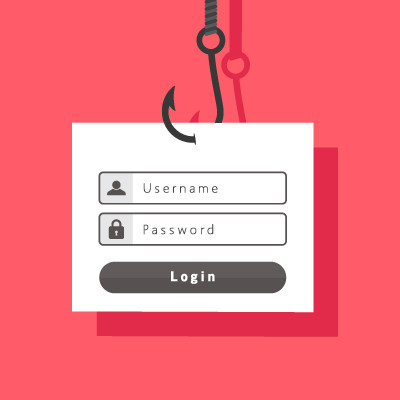- Home
- About Us
- IT Services
- Managed IT Services
- @Home
- @Work
- @School
- @Worship
- Outsourcing your IT
- Remote Workforce
- vCIO
- IT Consulting
- Comprehensive IT Support
- Remote Monitoring & Maintenance
- IT Vendor Management
- Co-Managed IT
- VMware
- 24/7 Help Desk
- Microsoft Hyper-V
- Professional Server Support
- Business Computing Assessment
- Staffing Services
- Desktop Monitoring and Management
- Cybersecurity Services
- Cybersecurity Overview
- Dark Web Monitoring
- Phishing Simulation
- Network Security
- Fully Hosted Security as a Service
- Cisco Security Solutions
- SOPHOS Security Solutions
- Unified Threat Management
- Content Filtering
- Access Control Solutions
- Endpoint Security Solutions
- Mobile Device Management
- Email Encryption
- Spam Protection
- Compliance Standards
- Penetration Testing
- Multi Factor Authentication
- Security Cameras
- Asset Tracking
- Cloud Computing Services
- Industry Specific
- IT for Healthcare Providers
- IT for Manufacturing
- Supply Chain and Logistics
- IT for Engineers and Architects
- IT for Insurance Companies
- IT for Accountants
- IT for Nonprofits
- Human Resources as a Service
- IT for Education
- IT for Hospitality
- Residential Computer Repair
- Point-of-Sale Technologies
- Health Care IT
- Electronic Medical Records
- IT for Dentists
- IT for Law
- Retail IT
- eManagement
- IT for Financial Services
- Data Services
- Hardware Services
- Software Services
- Business Communication
- Media & Internet Services
- Managed IT Services
- Understanding IT
- Blog
- Support
- Contact Us
- Home
- About Us
-
IT Services
-
Managed IT Services
- @Home
- @Work
- @School
- @Worship
- Outsourcing your IT
- Remote Workforce
- vCIO
- IT Consulting
- Comprehensive IT Support
- Remote Monitoring & Maintenance
- IT Vendor Management
- Co-Managed IT
- VMware
- 24/7 Help Desk
- Microsoft Hyper-V
- Professional Server Support
- Business Computing Assessment
- Staffing Services
- Desktop Monitoring and Management
-
Cybersecurity Services
- Cybersecurity Overview
- Dark Web Monitoring
- Phishing Simulation
- Network Security
- Fully Hosted Security as a Service
- Cisco Security Solutions
- SOPHOS Security Solutions
- Unified Threat Management
- Content Filtering
- Access Control Solutions
- Endpoint Security Solutions
- Mobile Device Management
- Email Encryption
- Spam Protection
- Compliance Standards
- Penetration Testing
- Multi Factor Authentication
- Security Cameras
- Asset Tracking
- Cloud Computing Services
-
Industry Specific
- IT for Healthcare Providers
- IT for Manufacturing
- Supply Chain and Logistics
- IT for Engineers and Architects
- IT for Insurance Companies
- IT for Accountants
- IT for Nonprofits
- Human Resources as a Service
- IT for Education
- IT for Hospitality
- Residential Computer Repair
- Point-of-Sale Technologies
- Health Care IT
- Electronic Medical Records
- IT for Dentists
- IT for Law
- Retail IT
- eManagement
- IT for Financial Services
- Data Services
- Hardware Services
- Software Services
- Business Communication
- Media & Internet Services
-
Managed IT Services
- Understanding IT
- Blog
- Support
- Contact Us
We Define IT Consulting
Four Signs You Have a Phishing Attack on Your Hands
There’s never been a more dangerous time to run a business. Okay, maybe that’s not necessarily true, but hear me out. With digital technology taking on a greater importance for businesses than ever before, companies have to contend with countless threats—including the ever-popular phishing scams—regardless of their geographical location.
Be Wary of Phishing Schemes
The biggest reason phishing attacks work so well is their uncanny ability to slip through the cracks of security solutions.
Hackers utilizing phishing attacks will use insidious tactics to get their messages past even the most powerful security systems. Sometimes, the attacks are so personalized that victims will click on links without a second thought. Of course, the uninformed are going to be more likely to fall prey to these types of attacks, but today’s phishing attacks are so convincing that one can’t really fault another for falling for one.
That’s why it’s so important to train your team on how to identify and address phishing attacks… before they do something silly.
Signs of Potential Phishing Attacks
To help your business identify potential phishing attacks, we’ve put together a list of four signs:
- Look at the sender: If you don’t know the sender, you should always be cautious of a message, particularly if it comes from outside of your organization. Consider verifying the sender's identity any other way you can (especially if they claim to be within your organization).
- Consider the urgency: If a message demands immediate action, you should be at least a little wary of it. This is especially true if the message is asking you to click links to confirm orders, contest winnings, or anything else you don’t remember doing.
- Suspicious behavior in general: If a message solicits sensitive information from you, such as your Social Security number, credit card information, or other type of personal or financial data, you have more than enough reason to consider it a phishing attack.
- Unsolicited links, images, or attachments: If you receive a message that looks legitimate but has suspicious links, images, or attachments, stop right there. Don’t click on any of them without first verifying the sender’s identity.
If you believe you’re the target of a phishing attack, inform your IT department or a trusted IT resource immediately.
Protect Your Business Today
Ideally, you protect your business so well that phishing attacks never hit your inbox in the first place.
It’s not so difficult to make this happen, especially with advanced threat detection available through spam blocking and content filtering solutions. With the right tools and, of course, proper training for your employees, you can take the bite out of phishing attacks. While you can never eliminate them entirely, the best course of action is always to make them less effective by eliminating opportunities for your team to get duped by them.
To get started, call We Define IT at 888-234-WDIT (9348) today.
About the author
Mr. Angaza has been changing the face of IT service for over 20 years. His unending commitment to technical excellence is only outmatched by his dedication to customer service and satisfaction.
Don't have an Account Yet?
You have to register to leave a comment, register here.


Comments